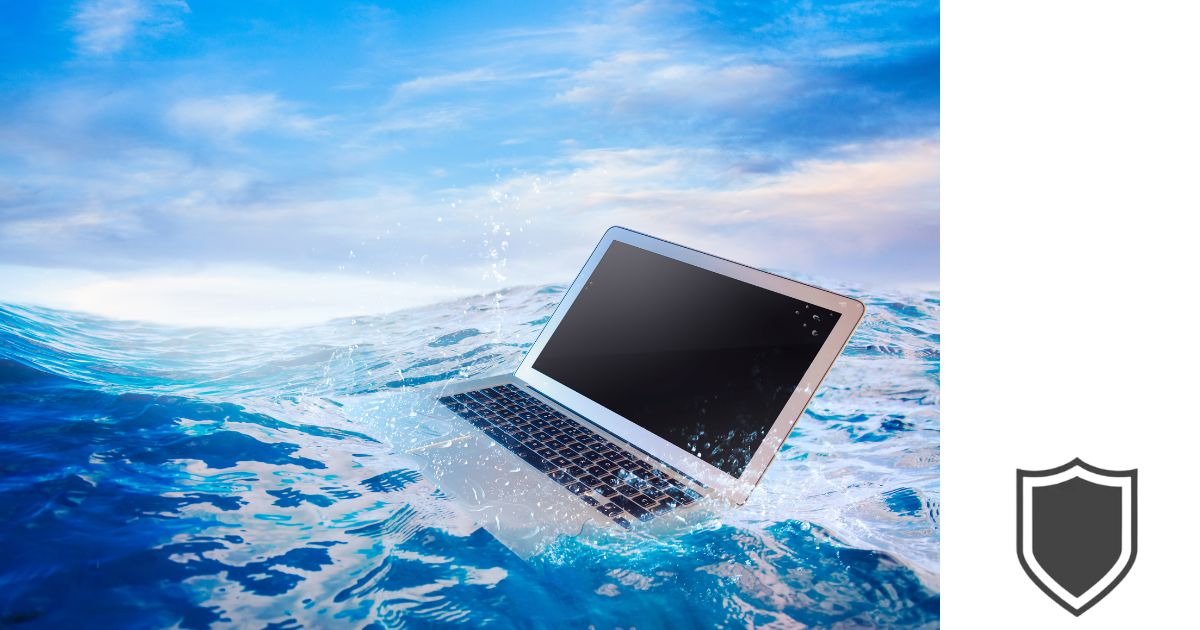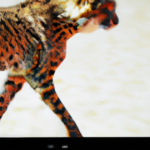Picture this situation: your gadget accidentally falls into water, resulting in both a waterlogged device and potentially lost data.
It’s a modern-day nightmare, right?
But before you write off those precious files as gone for good, let’s talk about water damage data recovery.
In this article, “Soaked to Saved: The Art of Water Damage Data Recovery,” I’m going to walk you through the steps to breathe life back into your drenched devices and recover what you feared was lost.
Water damage doesn’t have to mean the end of your data. So, grab a towel (for the device, not your tears), and let’s dive into the world of data recovery.
Table of Contents
Understanding Water Damage

When I encounter water-damaged electronic devices, I consider the various types and causes of water damage as well as the importance of assessing its extent promptly.
Types of Water Damage
- Clean Water: This is water from sanitary sources which poses no substantial risk from dermal, ingestion, or inhalation exposure. Examples include sink overflows or appliance malfunctions.
- Grey Water: This contains some degree of contamination. It can cause discomfort or illness and is typically from washing machines, toilet overflows without feces, or sump pump failures.
- Black Water: Highly contaminated, black water can contain sewage, harmful chemicals, and microbes. Floodwaters and sewage backups fall under this category.
Common Causes of Water Damage
- Natural Disasters: Hurricanes, floods, and thunderstorms can cause significant water damage to electronics.
- Plumbing Issues: Leaking or bursting pipes are a frequent culprit of water damage in homes and businesses.
- Accidents: Spillages or appliances malfunctions, like a dishwasher overflow, can also lead to water-intruded devices.
Assessing the Extent of Water Damage
- External Inspection: I check for visible corrosion or discoloration on the device’s exterior.
- Internal Examination: I open the device to inspect for moisture presence and damage to circuitry and components.
- Functionality Tests: I run diagnostics, if possible, to determine which parts are functioning and which are compromised.
Precautions and Immediate Response

In the face of water damage to electronic devices, I know the importance of acting swiftly to increase the chances of successful data recovery. The key is balancing urgent action with the correct protocol to ensure both personal safety and data integrity.
Safety First: Handling Water Damaged Devices
When I encounter water-damaged devices, my priority is always safety. Electricity and water are a dangerous combination, so I make sure to disconnect any power sources before handling the devices. I wear protective gear like gloves and a mask to avoid contact with potentially contaminated water.
Initial Steps to Minimize Data Loss
As I assess the situation, I refrain from turning on the device or attempting to dry it out with heat, as this can worsen the damage. My initial step is to gently blot excess moisture with a clean, lint-free cloth, and I keep the device turned off. If possible, I remove batteries and SIM cards to prevent short circuits.
Do’s and Don’ts After Water Exposure
Do:
- Remove: Take out any batteries or removable media.
- Dry: Pat the device with a cloth and place it in a well-ventilated area.
Don’t:
- Heat: Avoid using hairdryers or radiators.
- Power On: Resist the urge to turn on the device.
By following these steps, I’m setting the stage for the best possible outcome in water damage data recovery.
Water Damage Data Recovery Techniques

When dealing with water-damaged storage devices, I find it’s crucial to act fast to maximize the chances of successful data recovery. Here’s a dive into some techniques I consider effective.
Professional Data Recovery Services
My first recommendation is typically to seek professional data recovery services, especially when the data is priceless. Professionals possess the necessary tools and cleanroom environments to handle water-damaged hard drives.
I’ve learned that this minimizes the risk of further damage that might occur from dust or static electricity. Services often begin with a thorough evaluation of damage and a recovery plan outlining the likelihood of success.
DIY Data Recovery Methods
For those considering DIY data recovery methods, caution is paramount. Here’s a basic outline:
- Power down: Immediately turn off the water-damaged device.
- Remove excess water: Gently pat the device with a dry cloth.
- Do not apply heat: It’s important not to use a hairdryer or oven, as these can warp components.
I must emphasize that disassembling the device or attempting to dry internal components should only be done if you have technical expertise.
Software Solutions for Water Damaged Drives
If the drive is operational after drying, software solutions might retrieve some data:
- Data recovery software: There are numerous applications designed to recover lost files. However, ensure the software is reputable to avoid further complications.
- Disk utilities: Sometimes, running disk utilities can help repair minor corruptions on the drive, allowing access to data.
Remember, these software solutions are only useful if the device can still be powered on and recognized by a computer. If there’s physical damage to the drive, software will be ineffective.
Post-Recovery Procedures

After successfully recovering data from water-damaged devices, I focus on essential strategies to restore, protect, and care for the device and its data.
Data Restoration and Backup
Once the data is retrieved, my first step is to restore the data to a secure device or system. This involves:
- Assessing the integrity of retrieved data.
- Prioritizing critical files for immediate restoration.
- Transferring files to a new device or a cloud-based service.
Next, I establish a robust backup plan to ensure data isn’t lost in the future. This plan typically includes:
- Regularly scheduled backups.
- Utilizing both physical and cloud storage solutions.
- Testing backup processes to confirm data can be recovered effectively.
Preventing Future Water Damage
To safeguard against future incidents, I take a proactive approach:
- Keep devices away from liquids and high humidity areas.
- Utilize waterproof cases or covers for added protection.
- Educate others on handling devices near water sources.
Device Care After Recovery
Maintaining the device post-recovery is crucial. I adhere to the following best practices:
- Keep the device in a dry, stable environment.
- Avoid exposing the device to extreme temperatures.
- Monitor the device for any signs of corrosion or damage over time.
By adhering to these procedures, I aim to ensure the longevity of the device and the safety of the data it holds. It’s a methodical approach for a digital world where data is as precious as the device itself.
The Last Word
Well, folks, we’ve navigated the stormy seas of water damage and emerged on the other side. It’s clear that while water and electronics make a daunting duo, all is not lost when they collide.
With “The Art of Water Damage Data Recovery,” we’ve explored that even the most drenched devices can offer a glimmer of hope for data recovery.
Remember, quick action, the right tools, and sometimes a touch of professional help can turn the tide in your favor.
So, next time your device decides to take a dive, keep calm, act fast, and remember the tips we’ve covered. Your data might just be more resilient than you think.
Stay dry and data-safe out there!
Water Damage Data Recovery FAQs

In this section, I’ll cover some common inquiries regarding recovery procedures for devices affected by water damage. These answers should provide guidance on how to handle different scenarios effectively.
What are the steps to retrieve photos from a water-damaged phone?
If your phone has been water-damaged, do not turn it on. Instead, I advise you to disassemble your device, if possible, and gently dry the parts. Professionals can often salvage photos through specialized tools and techniques in a controlled environment.
Is it possible to transfer data from a water-logged iPhone?
Yes, it’s possible. If the iPhone will not power on, it’s typically a matter for a professional data recovery service. They can attempt to bypass damaged components and access the data directly from the memory chips.
How can I recover data from a wet external hard drive?
Firstly, don’t attempt to power on the wet drive. I recommend you to keep it powered off and take it to a data recovery expert. They have the equipment necessary to safely dry your device and recover the data from it.
What should I do to extract data from a broken Android phone after water exposure?
Avoid charging or turning on your Android phone. Reach out to a data recovery service quickly. Technicians might be able to dismantle your device and directly recover data from the internal memory.
Can a computer that has been water damaged still have its data recovered?
Often, yes, the data on a water-damaged computer can still be recovered. Don’t attempt to turn on the computer, and contact a professional data recovery service to evaluate the possibility of salvaging your data.
Are there effective methods for recovering data from a water-damaged iPhone seen on online forums?
Online forums may offer a variety of tips, but I recommend skepticism as many solutions may not be reliable and can further damage the iPhone. Your safest bet is consultation with certified data recovery experts who are familiar with iPhone architecture.
- Amazon Email Phishing: How to Identify and Avoid Scams - May 11, 2025
- Malwarebytes vs McAfee: Decoding the Ultimate Antivirus Battle - May 11, 2025
- Best Antivirus for Windows 10: Expert Recommendations for 2023 - May 11, 2025









